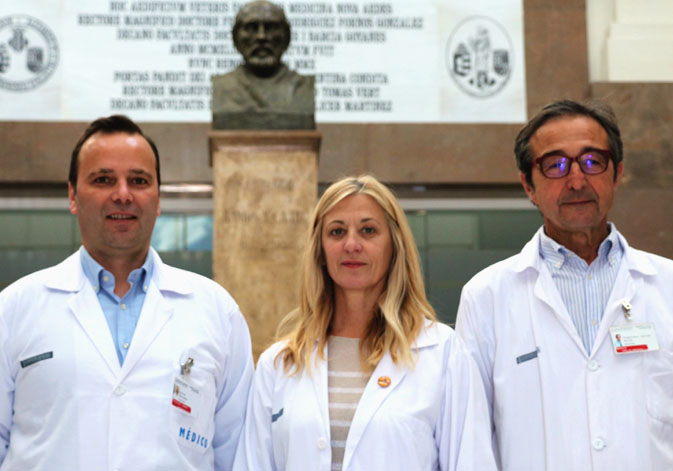The team of Javier Belda applies a technique that reduces the postoperative deficit of oxygen in blood in patients with morbid obesity
- Scientific Culture and Innovation Unit
- June 25th, 2019

The INCLIVA-UV Anesthesia Research Group, coordinated by the Professor of Surgery at the University of Valencia Javier Belda, leads the study that has shown that the early application of high-flow oxygen supplementation in the operating room reduces the severity of postoperative pulmonary complications. The study, with 64 patients, has been published in the scientific journal Minerva Anestesiologica.
This is a randomised controlled trial with the aim of decreasing the prevalence of postoperative hypoxemia (deficiency of blood oxygenation) with the early application of oxygen therapy. This is done through a high-flow nasal cannula (double tube) in patients with morbid obesity undergoing bariatric surgery (technique to obtain significant weight loss). The open lung approach, an intraoperative strategy, was applied to patients (application of an individualised positive expiratory pressure that maintains optimal lung volume). At the time of removing mechanical ventilation from a group, high-flow oxygen therapy was applied in comparison with those who received standard oxygen therapy.
This study was conducted at the Anesthesiology and Reanimation Service of the University Clinical Hospital of Valencia, from May to November 2017 (ClinicalTrials.gov NCT03155711). 64 patients with morbid obesity undergoing laparoscopic bariatric surgery were included in it (32 in each group), who received protocolised protective pulmonary ventilation, including alveolar recruitment manoeuvres (re-expansion of collapsed lung areas) and positive pressure at the end of individualised expiration (PEEP). There were no differences in ventilatory treatment, surgery duration or ventilation between groups, and treatment was similar during the perioperative period. During extubation and within the following 2 hours, one group received high-flow oxygen and the other group received conventional oxygen therapy.
As stated by Javier Belda, co-author of the study: “The results obtained allow us to affirm that oxygenation with a high-flow nasal cannula reduces postoperative hypoxemia in patients with morbid obesity, but also when high-flow treatment is initiated before extubation, the risk of postoperative pulmonary complications is minimised”.
According to the article, this study shows that oxygen therapy administered through a high-flow nasal cannula, initiated before endotracheal extubation, reduces complications due to hypoxemia and postoperative atelectasis in patients with morbid obesity subjected to bariatric surgery. Although a higher prevalence of hypoxemia was found than initially expected, no increase in postoperative morbidity and mortality was observed, as published in previous studies. This can be explained by the development of mild complications, which coincide with previous trials comparing different strategies of intraoperative ventilation in bariatric surgery.
The findings of the study suggest a new way to optimise the performance of oxygen therapy with high flow cannulas and, therefore, open the door to future research designed to establish new indications for this treatment during the postoperative period.
Postoperative pulmonary complications
Postoperative pulmonary complications are the most frequent after surgery and often contribute to an increase in postoperative morbidity and mortality. Several groups, including the one led by Javier Belda, have investigated different perioperative strategies focused on protective ventilation of the lungs, with the aim of reducing surgical complications. These include an intraoperative approach called “open lung” (OLA) to reverse alveolar collapse by applying a recruitment manoeuvre, followed by an individualised adjustment of positive pressure at the end of optimal PEEP expiration.
However, even when an intraoperative approach to pulmonary protection is used, the prevalence of pulmonary complications remains high. Postoperatory hypoxemia (lack of oxygen) is the complication that occurs most often in the immediate postoperative period and is caused mainly by more or less important collapses of lung tissue (atelectasis). Both can be reduced with the use of high-flow oxygen therapy.
Article:
Ferrando C; Puig J; Serralta F; Carrizo J; Pozo N; Arocas B; Gutiérrez A; Villar J; Belda FJ; Soro M. «High-flow nasal cannula oxygenation reduces postoperative hypoxemia in morbidly obese patients: a randomized controlled trial». Minerva Anestesiol. 2019 Apr 16. doi: 10.23736/S0375-9393.19.13364-0
















